

18 11 23 27 Mitigating Active Shooter Risk In Your Workplace - Isaac Monson and Madison, Hub International What Does The White House’s Blueprint For AI Bill Of Rights Mean For HR - Eric Sydell, Modern Hire How To Support Religious Diversity In the Workplace During The Holiday Season - Roselle Rogers, Circa Top Compliance Mistakes HR May Not Know It’s Making - Part II - Brett Farmiloe, Terkel.io BILL 41: EMPLOYERS’ OBLIGATIONS TO INJURED WORKERS SET TO INCREASE - Gary T. Clarke, Partner and Co-Head, and David M. Price, Associate, Employment & Labour Group, Stikeman Elliott DECEMBER 2022 • Vol.9 • No.12 (ISSN 2564-2022)
On the Cover
Articles
09 Hiring Seasonal Workers: Rules And Regulations HR Must Be
Aware Of
Establishing right policies to avoid workplace disruptionsRamsey Aburaneh, Head, Digital Growth, BrightHR
14 Workplace Trends And Predictions For 2023

It is time to set your priorities for the new year - Mandy Price, Co-Founder and CEO, Kanarys
21
Social Media Screening: Dos And Don’ts
Ensuring compliance while screening applicants is important - Steve Smith, President, Sterling
Bill 41: Employers’ Obligations To Injured Workers Set To Increase
British Columbia proposes changes to the Workers Compensation Act

- Gary T. Clarke, Partner and Co-Head, and David M. Price, Associate, Employment & Labour Group, Stikeman Elliott
32 3 Things We Learned Moving To A Transparent Pay Approach
25
What Can Be Done to Reprice Underwater Stock Options
Companies can consider multiple ways to reinvigorate these unique incentive options - Stephen Rickles, Partner, Spencer Fane LLP
Building an equitable and transparent workplace culture - Cydnee DeToy, Partner and Chief of Staff, Next Street
INDEX HR Legal & Compliance Excellence
Vol.09 No.12 (ISSN 2564-2022)
DECEMBER 2022
07
Mitigating Active Shooter
Risk
In Your Workplace
Best practices to manage workplace violence risk and the threat of a workplace mass shooting - Isaac Monson, CPP, Assistant Vice President and Senior Risk Consultant, and Madison Katz, Assistant Vice President, Hub International
What Does The White House’s Blueprint For AI Bill Of Rights Mean For HR Why are there so many emerging regulations on AI? - Eric Sydell, EVP, Innovation, Modern Hire

How To Support Religious Diversity In the Workplace During The Holiday Season

General guidelines to follow - Roselle Rogers, Vice President, Diversity, Equity, and Inclusion, Circa
18 23 27
Top Compliance Mistakes HR May Not Know It’s Making - Part II 9 mistakes HR leaders must be mindful of in their workplaces - Brett Farmiloe, Founder / CEO and CHRO, Terkel.io

TOP PICKS
11
INDEX
How are our Legal & Compliance Products and Services helping to make you smarter?
Legal & Compliance Excellence - Monthly Interactive Learning Journal
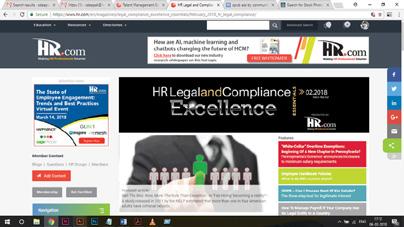
This monthly interactive learning experience showcases solutions to deal with the latest legal and compliance issues facing corporations and legal departments.
Legal and Compliance Webcasts for Credit
HR.com offers various informative webcasts on a variety of topics including the latest HR compliance updates and legal considerations for employers and all HR professionals. Webcasts are available live online with a downloadable podcast and a copy of the slides (PDF) available before and after each webcast. Earn all of the required recertification credits for aPHR, PHR, SPHR, GPHR, and SHRM Certifications. HR.com’s one-hour webcasts, in every HR specialty including Legal and Compliance, are pre-approved for HRCI and SHRM credit (excluding Demo webcasts).
Legal and Compliance Community
Join almost more than 30,000 HR.com members with a similar interest and focus on compliance on legal regulations in HR. Share content and download research reports, blogs, and articles, network, and “follow” peers and have them “follow” you in a social network platform to communicate regularly and stay on top of the latest updates. This well established Legal and Compliance Community is an invaluable resource for any HR professional or manager.

SEP 2017 Vol. No. 09 Use these invaluable Legal & Compliance resources today! For more information phone: 1.877.472.6648 |
sales@hr.com |
email:
www.hr.com
Editorial Purpose
Submissions &
Debbie Mcgrath Publisher, HR.com
Deepa Damodaran Editor, HR Legal & Compliance Excellence

and services, call 1-877-472-6648
With the holiday season fast approaching, many businesses, such as retailers, restaurants, and event companies often see a spike in custo3mers, requiring more assistance to accommodate high demand.
Many have already hired or are in the process of hiring seasonal staff. Although seasonal staff members are hired typically for six months or less, this type of employment poses many questions.
In Hiring Seasonal Workers: Rules And Regulations HR Must Be Aware, BrightHR's Ramsey Aburaneh answers many questions, including do seasonal staff have the same rights as full-time employees, and do you need an employment contact.
Last month, British Columbia proposed changes to the Workers Compensation Act, or Bill 41. Learn what changes this bill proposes and how would it impact employers in Gary T. Clarke and David M. Price's
(Stikeman Elliott) article, Bill 41: Employers’ Obligations To Injured Workers Set To Increase.
Hub International's Isaac Monson and Madison Katz share the best practices to manage workplace violence risk and the threat of a workplace mass shooting in Mitigating Active Shooter Risk In Your Workplace.
Also check out How To Support Religious Diversity In the Workplace During The Holiday Season by Roselle Rogers, and Top Compliance Mistakes HR May Not Know It’s Making - Part II by Brett Farmiloe, among others.
This is not all! This issue of HR Legal & Compliance Excellence also focuses on other legal aspects and highlights that should help you keep your workforce healthy, safe and secured.
Happy Reading!
Write to the Editor at ePubEditors@hr.com
HR Legal & Compliance Excellence (ISSN 2564-2022)
is published monthly by HR.com Limited, 56 Malone Road, Jacksons Point, Ontario L0E 1L0 Internet Address: www.hr.com

Disclaimer: The views, information, or opinions expressed in the Excellence ePublications are solely those of the authors and do not necessarily represent those of HR.com and its employees. Under no circumstances shall HR.com or its partners or affiliates be responsible or liable for any indirect or incidental damages arising out of these opinions and content.
NOTE Do Seasonal Staff Have The Same Rights As Full-Time Employees? Subscribe now for $99 / year And get this magazine delivered to your inbox every month Become a Member Today to get it FREE! SIGN UP OR For Advertising Opportunities, email: sales@hr.com Copyright © 2022 HR.com. No part of this publication may be reproduced or transmitted in any form without written permission from the publisher. Quotations must be credited.
EDITOR’S
Our mission is to promote personal and professional development based on constructive values, sound ethics, and timeless principles.
Debbie McGrath CEO, HR.com - Publisher
Jeffers VP, Sales Sue Kelley Director (Product, Marketing, and Research) Babitha Balakrishnan and Deepa Damodaran Excellence Publications Managers and Editors HR Legal & Compliance Excellence Team Deepa Damodaran, Editor Arun Kumar R Design and Layout (Digital Magazine) Vibha Kini and Chandra Shekar A K Magazine (Online Version)
Excellence Publications
Dawn
Correspondence Please send any correspondence, articles, letters to the editor, and requests to reprint, republish, or excerpt articles to ePubEditors@hr.com For customer service, or information on products
In a world of unparalleled challenges (global pandemic, racial injustice, politi cal rivalry, digital 4.0, emotional malaise), uncertainty reigns. Finding opportu nity in this context requires harnessing uncertainty and harnessing starts with reliable, valid, timely, and useful information. The Excellence publications are a superb source of such information. The authors provide insights with impact that will guide thought and action.
Dave Ulrich
Rensis Likert Professor, Ross School of Business, University of Michigan Partner, The RBL Group

Excellence publications are my ‘go-to’ resource for contemporary and action able information to improve leadership, engagement, results, and retention. Each edition offers rich and diverse perspectives for improving the employee experience and the workplace in general.




Julie Winkle Giulioni
Author, Virtual /Live Keynote Presenter, Inc.’s Top 100 Leadership Speakers
I regularly read and contribute to Leadership Excellence and Talent Manage ment Excellence. I use many of the articles I read to augment my own presen tations and I often share the articles with my clients. They are always quick, right on target for the latest issues in my field, and appreciated by my clients.
If you want to stay up to date on the latest HR trends, choose a few of the different issues from the Excellence series of publications.
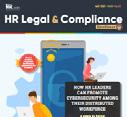
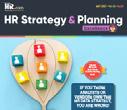
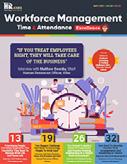
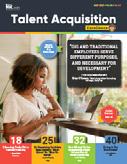
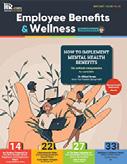


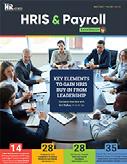
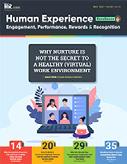 Dr. Beverly Kaye CEO, BevKaye&Co.
Dr. Beverly Kaye CEO, BevKaye&Co.


We’re eager to hear your feedback on our magazines. Let us know your thoughts at ePubEditors@hr.com WHY EXCELLENCE PUBLICATIONS?
Bill 41: Employers’ Obligations To Injured Workers Set To Increase
British Columbia proposes changes to the Workers Compensation Act
By Gary T. Clarke and David M. Price, Stikeman Elliott
On November 1, 2022, the Workers Compensation Amendment Act (No. 2), or Bill 41, passed second reading in the British Columbia legislature. If enacted, Bill 41 would make a number of important changes to the Workers Compensation Act (the “Act”) that would increase employers’ obligations to injured workers.
Duty to Accommodate and Return Injured Workers to Work
If passed, Bill 41 would create a new employer duty to return injured workers back to their pre-injury work or otherwise provide alternative work, as well as accommodate injured workers with any necessary changes to their work or the workplace up to the point of undue hardship.
These duties would apply only to employers with 20 or more workers, and in respect of
workers with at least 12 months of continuous service before their injury. It should be further noted that these duties would expire 2 years after the date of injury, if the worker has not returned to work or if the worker is carrying out suitable work.
This new duty to accommodate would be separate from the existing accommodation duty under the Human Rights Code
If an employer terminates the returned worker within 6 months of their return, the legislation deems the employer to have breached its duties under the Act, unless the employer can demonstrate that the termination was unrelated to the worker’s injury. If the employer breaches the duty to maintain employment, WorkSafeBC may provide the worker with an amount equivalent
to one year’s compensation under the temporary total or partial disability provisions of the Act
In addition, Bill 41 would establish a mutual duty to cooperate by both the employer and worker. Specifically, they will need to establish and maintain communication as soon as practicable after the injury occurs, identify suitable work for the worker that, if possible, restore their pre-injury wages; and apprise WorkSafeBC of the worker’s return to work or continuation of work.
Either party may request that WorkSafeBC investigate a failure to cooperate, and WorkSafeBC may impose remedies, including reducing or suspending payments of compensation to the worker until they comply with their obligations.
HR Legal & Compliance Excellence presented by HR.com DECEMBER 2022 7 Submit Your Articles
COVER ARTICLE
Prohibition on Wage Suppression, New WorkSafeBC Penalty
Authority
Bill 41 also aims to crack down on claim suppression. The amendments include a new provision expressly prohibiting employers from discouraging or persuading workers from submitting compensation claims or receiving compensation under the Act. Employers suppressing claims may face investigation and penalties for doing so. The Act currently prohibits employers from discouraging workers from reporting injuries to WorkSafeBC and any agreement to waive or forego benefits under the compensation provisions of the Act is void.
To further strengthen WorkSafeBC’s enforcement capabilities, Bill 41 would permit WorkSafeBC to impose administrative penalties for breaches of the employer’s duty to cooperate and maintain employment.
Changes to the Inflation Adjustments for Periodic Payments
Bill 41 also indexes periodic payments to inflation. Currently, the Act calculates the annual adjustment by referring to the Consumer Price Index (“CPI”) and subtracting 1%. It does not allow an adjustment above 4%. Bill 41 would remove the 1% subtracting rule. Instead, under the proposed framework, periodic payments will adjust at the same rate as inflation (as measured by the CPI), up to
4%. Further, WorkSafeBC would have the authority to increase the percentage above 4%, to match a higher inflation rate.
Other Proposed Changes
Bill 41 would also require interest payments for outstanding benefits owed to a worker for over 180 days, pursuant to a review or appeal decision.
It would also create an independent office of the Fair Practices Commissioner. Its mandate will be to investigate complaints of unfair dealings with WorkSafeBC, and to recommend changes and improvements to WorkSafeBC.

Finally, Bill 41 gives employers and workers the option to request an independent medical opinion as part of the appeals process to the Workers Compensation Appeal Tribunal. Either the employer or worker can request that the Tribunal obtain an independent medical opinion.

Conclusion
The new provisions, if enacted, would increase employers’
obligations under the workers’ compensation system.
The authors would like to acknowledge the assistance of Cameron Penn, articling student, in the preparation of this article.

DISCLAIMER: This article is intended to convey general information about legal issues and developments as of the indicated date. It does not constitute legal advice and must not be treated or relied on as such.
This article first appeared here
Gary Clarke is a Partner and Co-Head, and David Price is an Associate of the Employment & Labour Group at Stikeman Elliott.
Would you like to comment?
HR Legal & Compliance Excellence presented by HR.com DECEMBER 2022 8 Submit Your Articles
41: Employers’ Obligations To Injured Workers Set To Increase
Bill
Hiring Seasonal Workers: Rules And Regulations HR Must Be Aware Of

Establishing
By Ramsey Aburaneh, BrightHR
With the holiday season fast approaching, many businesses are beginning to hire seasonal staff. At this time of year, busy industries, such as retailers, restaurants, and event companies often see a spike in customers, requiring more assistance to accommodate high demand.
Although seasonal staff members are hired typically for six months or less, this type of employment poses many questions. For example, do seasonal staff have the same rights as full-time employees? Do you need an employment contact?
HR Legal & Compliance Excellence presented by HR.com DECEMBER 2022 9 Submit Your Articles
right policies to avoid workplace disruptions
It’s crucial for employers to have a plan in place to not only ensure they hire well-skilled seasonal workers, but also have the right policies in place to avoid any workplace disruptions. Following are some valuable information for every employer who is hiring seasonal workers.
Workplace Rights
Seasonal workers are protected under the Employment Standards Act and have the same rights as full-time staff. This includes minimum wage, overtime, vacation pay, and hours of work. Seasonal workers are also covered under health and safety, human rights, and worker’s compensation legislation.
Employment Contract
Employers tend to overlook the fact that seasonal workers need an employment contract, even though the employee will only be working for a short period of time. It is important to note that contracts benefit both the employee and employer as it paints a clear picture of what is expected, which helps to avoid any confusion.
Additionally, seasonal employment contracts containing a valid termination clause can be useful
for employers in limiting the employees’ entitlements upon termination.
Recruiting Rules and Policies
Begin your recruitment process in advance to not only fill spots, but to also find the right candidates. Job descriptions need to clearly outline the job requirements and work schedule. This includes being upfront about physical requirements and working later hours.

Employee Retention
The busy holiday season can take a toll on staff and become overwhelming, but there are a few things employers can do to keep staff feeling satisfied and motivated. Employers can offer end-of-season bonuses, and provide benefits as well as perks.
Workforce Management
Using smart HR technology, employers can help properly manage staff all from the click of a button. The shifts and schedule feature lets you make schedule changes, edit shifts, and accept/ decline shifts.
Not only does it instantly notify the respective manager and team to ensure a solution can be worked on immediately, but it also clears up any confusion and reduces no-shows due to last-minute schedule changes. This works to improve transparency and keep everyone up to date when it comes to last-minute changes.
Ramsey Aburaneh is the Head of Digital Growth at BrightHR. Would you like to comment?

HR Legal & Compliance Excellence presented by HR.com DECEMBER 2022 10 Submit Your Articles
Hiring Seasonal Workers: Rules And Regulations HR Must Be Aware Of
Mitigating Active Shooter Risk In Your Workplace
By Isaac Monson, CPP, and Madison Katz, Hub International
In a recent FBI report titled Active Shooter Incidents in the United States in 2021 the FBI reported a total of 61 designated active shooter incidents, which is up more than 50% from 2020.
The majority of these incidents occurred in places of employment including commerce-related environments, schools, government properties, healthcare facilities, and houses of worship. This common thread highlights the unique role HR professionals can play in helping organizations prevent and manage violence in the workplace.
Assess and Understand Your Business’ Needs and Risk
There are four types of workplace violence organizations and HR professionals should be aware of: criminal intent, customer/client violence toward workers, worker-on-worker violence, and personal/ domestic relationship issues that may spill into the workplace.
Each type of violence has unique risk factors. Where your organization is most at risk will depend on a number of variables including industry, geography, local crime rates, workforce demographics, and the type of product or service delivered.
HR professionals are uniquely positioned to address these issues where workplace culture and workplace
violence intersect to create programs and initiatives to prevent and intervene. Here are three tips for getting started:
1. Create a multi-disciplinary team and complete a needs assessment. Every organization is different and there is no “one size fits all solution” for addressing toxic cultures and workplace violence. Identify key senior leaders and stakeholders and assemble a team of people to assess the current state of your organization’s culture and related risk of workplace violence.
2. Address your workplace culture. Work with organizational development experts to create an environment, where employees feel supported and comfortable addressing workplace issues with leadership and coworkers. Address communication and culture in your organization through team building, and leadership development.
3. Develop and implement a Workplace Violence Prevention Program. There is wide consensus across leading professional associations like ASIS International (Security), SHRM (HR), ASSP (Safety) and a large body of knowledge identifying best practices and program frameworks for workplace violence prevention and intervention programs.
HR Legal & Compliance Excellence presented by HR.com DECEMBER 2022 11 Submit Your Articles
Top Pick
Best practices to manage workplace violence risk and the threat of a workplace mass shooting
Establish All-Employee Workplace Violence Awareness Training
You cannot manage concerning behaviors, an escalating conflict, or aggressive conduct if you do not know about it. Ensure that part of your workplace violence prevention and intervention program initiative includes workplace violence awareness training for all employees. Employees are your eyes and ears and equipping them to identify problems early and report them will create opportunities for organizations to intervene early, assess and manage threats, and respond strategically before there is an emergency situation.
Formalize a Process to Assess and Manage Threats
If your organization becomes aware of a threat of violence toward an individual or facility you need to be capable of assessing the threat and actively managing it. Employers often become aware of concerning behaviors or threats of violence by word of mouth, social media activity, email, or text message.
When this happens, it is critical that a cross-functional team convene to assess the seriousness, establish an appropriate action plan, and collaborate with the
right internal and external resources to manage the risk and protect employees. Depending on the level of risk associated with a threat external partners may include local law enforcement, mental health services, contracted security firms, or threat assessment professionals.
Additionally, organizations should include an active shooter response plan component within their broader all-hazards emergency action plans (EAPs) and make sure all employees are familiar with these plans.
During an Active-shooter Event
Should the worst happen, and an active shooter enters your business, the emphasis shifts to survival, and employees will have to quickly determine the most reasonable way to protect their own lives. The U.S. Department of Homeland Security suggests individuals be trained on the “Run-Hide-Fight” method Here’s an overview:
RUN, if you can. Get away from the shooter or shooters, when possible. Leave all belongings and get out of the building. Call for help only when you are sure you are in a safe place. Describe the shooter, their location, and the amount and type of weapons.
HR Legal & Compliance Excellence presented by HR.com DECEMBER 2022 12 Submit Your Articles
Mitigating Active Shooter Risk In Your Workplace
HIDE, when you can not get away. Silence electronic devices. Lock doors, turn off lights and close blinds. Hide under or behind large objects, like desks or copy machines, or along walls. Do not hide in groups. If you can, communicate with law enforcement through text or via a sign in an exterior window. Stay in place until law enforcement gives you the “all clear.”
FIGHT, when in immediate danger. Use whatever makeshift weapons available, such as chairs, scissors, fire extinguishers, hot coffee, pens, or books to disarm and distract the shooter.
When first responders arrive, they will not be able to stop and help injured persons until the environment is safe. Keep your hands up, empty and visible to the officers. Follow law enforcement instructions and evacuate in the direction they came from.
Do You Need Active Shooter Coverage?
The final piece of preparation involves analyzing the company’s liability in an active shooter situation.
As a baseline, every business needs Workers’ Compensation, General Liability, Property, and Environmental coverages. Each of these policies should be examined individually as they relate to an active shooter event to determine coverage limits and policy exclusions.
A business may also take out a dedicated active shooter policy, which also includes coverage for non-gun-related acts of violence. An active shooter policy can be triggered without a lawsuit and means one deductible and a dedicated claims process for all related claims. Active shooter policies can include the following coverage features:
● Third-party legal liability, including victim and business expenses, crisis consultation expenses and sometimes property damage

● Employees and third parties on the premises at the time of the event
● Up to $20M in limits
● Small or no deductible for up to $10,000 and higher risk profiles
● No deductible or waiting period for claims payout
● Risk mitigation consultations
● Terrorism is always included
● Pollution cleanup coverage is available and will include biological clean up
● Includes “Loss of Attraction” coverage, which provides relief if patrons are fearful or your building/location
● Offsite exposure endorsement available for companies that have employees working offsite where they are performing their job
As organizations continue to invest in worker safety and security initiatives, there is significant value in a comprehensive approach to workplace violence risk management with risk commensurate focus on prevention, readiness, response and recovery elements.
Isaac Monson, CPP, is Assistant Vice President and Senior Risk Consultant with global insurance brokerage Hub International’s Organizational Resilience practice, specializing in helping organizations develop enterprise security risk management programs. He has over 15 years of professional experience managing risk in various public and private industry settings such as state government, manufacturing, construction, transportation, retail, healthcare and non-profit.
Madison Katz is Assistant Vice President for the Management Liability practice for Hub International Midwest Limited’s Management and Professional Liability (MAPS) Group. Largely focused on private/ non-profit, Madison is responsible for maintaining the book of business, marketing, advising, and maintaining market relationships on a national level.
Would you like to comment?

HR Legal & Compliance Excellence presented by HR.com DECEMBER 2022 13 Submit Your Articles
Risk In Your Workplace
Mitigating Active Shooter
Workplace Trends And Predictions For 2023
By Mandy Price, Kanarys
Here are 7 workplace trends that await the world of work in 2023.
1. Upskilling Will Be Key in Recession-proofing a Business
With all of the signs pointing to a global economic downturn, companies have already started announcing hiring slowdowns, freezes, and layoffs. The technology sector has been particularly hard hit, with thousands laid off from Meta, Alphabet, Twitter, and Amazon. Investing in the upskilling of current employees will be a key focus for companies in the new year. It will help them prepare for a period of economic uncertainty, and instead of hiring, they will train workers to have skills that can meet a wide range of business requirements.
Upskilling will also contribute to employee retention. According to a study, employees value the ability to learn new skills so much that 83% of workers place it as their top priority next year. In that same study, 74% of employees
were willing to leave their current job due to a lack of skill-building and career mobility opportunities.
2. Political Affiliation Bias Will Be an Area of Concern
While talking about politics at work has been taboo, younger employees are eager to discuss their political affiliations. Among workers aged 35-45, 71% agreed that all employees should be able to express their political opinions at work. However, we’re seeing political affiliation bias has risen by 12 percentage points in the past three years. With the next presidential election coming up in 2024, conversations around political issues will only heat up, and companies will need to lean on DEI and put guidelines in place to help eliminate conflict.
3. Gen Z Will Grow its Influence in the Workplace
Gen Z is already joining the workplace in droves with many of them entering their early twenties and ready for full-time employment. Data shows that by 2025, Gen Z workers will make
up 27% of the workforce. Soon they will yield immense economic power, and with their culture of influencing change, Gen Z voices will not go unnoticed in the workplace.
It will be important for companies to figure out how to keep this demographic group as they are proving they have no problem leaving their jobs if companies do not fulfill their requirements. Nearly 65% of Gen Z workers plan on leaving their jobs in less than a year, compared to 40% of all employees.
4. The Expanding Role of Caregivers Will Be Addressed
A recent survey finds that workers with caregiving responsibilities are the fastest-growing category of employee identity groups, with 12% of companies tracking them as such. The pandemic opened up a range of caregiver responsibilities, such as caring for aging parents, sick kids, or family members with disabilities, and companies will need to find ways to support all employees, who identify as caregivers.
HR Legal & Compliance Excellence presented by HR.com DECEMBER 2022 14 Submit Your Articles
It is time to set your priorities for the new year
5.
More Companies Will
Embrace the Four-Day Workweek
In early June, over 70 companies in the United Kingdom embarked upon a six-month four-day workweek pilot program, and midpoint figures were already extremely promising. According to 4 Day Week Global, the nonprofit spearheading the U.K.’s abbreviated workweek initiative, productivity has been maintained or improved at the majority of participating firms (95%) and most will continue with the program once the official trial ends (86%).
We are already seeing the four-day work week becoming more prevalent in the United States, and Democratic Congressman Mark Takano has even introduced a California bill that would reduce the standard work week from
40 hours to 32 hours. With the UK trial concluding at the end of 2022, the results may encourage more companies to put in place shortened work weeks.
6. Pay Transparency Will Continue Gaining Momentum
Several states now require that salary information be included on job postings, with New York City becoming the most populous jurisdiction to implement this requirement by the end of 2022. When similar laws go into effect in Washington and California at the beginning of 2023, a fifth of all workers nationwide will be covered under pay-transparency laws.
These new laws may lead to other states following suit, along with more employees calling for pay transparency. According to a survey conducted earlier this year,
a majority of workers want insight into how their organizations calculate compensation, and more than two-thirds would switch employers for greater transparency.
7. Mental Health Will Remain a Top Priority
The threat to employee well-being continues to intensify with 60% of the global workforce reporting at least one mental health challenge, including symptoms of anxiety, depression, or burnout, according to McKinsey.
Company and HR leaders need to find solutions that address the mental health challenges their employees are facing. In 2023, mental health and well-being will continue to be a central focus, and a Gallup survey found that two out of three U.S. employers say they plan to make employee mental health, and emotional well-being programs and solutions that support it, one of their top three health priorities over the next three years.

HR Legal & Compliance Excellence presented by HR.com DECEMBER 2022 15 Submit Your Articles
Workplace Trends And Predictions For 2023
Mandy Price is the Co-Founder and CEO of Kanarys
Would you like to comment?
HRCI® & SHRM® CERTIFICATION PREP COURSES
GROUP RATES AVAILABLE
For HR Professionals
Show that management values the importance of the HR function, and has a commitment to development and improvement of HR staff.
Ensure that each person in your HR department has a standard and consistent understanding of policies, procedures, and regulations.
Place your HR team in a certification program as a rewarding team building achievement.
For Your Organization
Certified HR professionals help companies avoid risk by understanding compliance, laws, and regulations to properly manage your workforce.
HR Professionals lead employee engagement and development programs saving the company money through lower turnover and greater productivity and engagement.
A skilled HR professional can track important KPIs for the organization to make a major impact on strategic decisions and objectives, including: succession planning, staffing, and forecasting.
HR.com/prepcourse CALL TODAY TO FIND OUT MORE 1.877.472.6648 ext. 3 |
sales@hr.com
1 Less expensive than a masters or PhD program, and very manageable to prepare with flexible study options. 2. Recertification - ensures HR professionals continue to be up to speed on the latest legislation and best practices 3. Recognized, Industry benchmark, held by 500,000+ HR Professionals

We offer group rates for teams of 5+ or more for our regularly scheduled PHR/SPHR/ SHRM or aPHR courses.
For groups of 12+, we can design a more customized experience that meets your organization’s needs. You can have scheduling flexibility in terms of the days, times, and overall length of the course.
Groups rates for HRCI exams are also available as an add-on.
All group purchases come with 1 year of HR Prime membership for each attendee to gain the tools and updates needed to stay informed and compliant.
Why Certification is the Best Choice:
CALL TODAY TO FIND OUT MORE 1.877.472.6648
ext. 3 | sales@hr.com | HR.com/prepcourse Group Rate Options 1 2 3
What Does The White House’s Blueprint For AI Bill Of Rights Mean For HR
By Eric Sydell, Modern Hire
If you have been paying attention to recent developments regarding artificial intelligence (AI) regulations in hiring, your head may well be spinning with confusion. Not only must you wade through what constitutes AI, and how it should and should not be used in your talent management operation, now you must also understand the myriad of emerging pieces of legislation surfacing across many different jurisdictions, in the U.S. and globally.
Onto this backdrop, the White House recently released its Blueprint for an AI Bill of Rights that is not exactly a bill of rights or even legislation at all. Confused? Take heart. None of the new and emerging rules around the use of
AI change best practices, making it a good time for a primer on what AI is and how it’s helping the hiring process.
First, What Even Is AI? AI is not the scary Hollywood robot most people think it is. At this point, it is simply software that processes information in a way that is uniquely good at making sense of unstructured data, such as what a person says or writes. The Equal Employment Opportunity Commission (EEOC) recently adopted a definition of AI based on the National Artificial Intelligence Initiative Act of 2020 (Section 5002(3)), defining it as, a “machine-based system that can, for a given set of human-defined objectives, make predictions, recommendations or decisions
influencing real or virtual environments.”
The EEOC states, “In the employment context, using AI has typically meant that the developer relies partly on the computer’s own analysis of data to determine which criteria to use when making employment decisions. AI may include machine learning, computer vision, natural language processing and understanding, intelligent decision support systems, and autonomous systems.” The difficulty lies in classifying advanced analytical tools. For example, a selection test may generate predictive numerical scores using an algorithm of some sort, which may or may not have been developed using the “computer’s own analysis of data,” a.k.a. AI.
HR Legal & Compliance Excellence presented by HR.com DECEMBER 2022 18 Submit Your Articles
Why are there so many emerging regulations on AI?
Top Pick
Based on the words contained in the regulations, it is not clear whether every type of psychometric test falls under the purview of new AI regulations. However, from a best practices perspective, all numerical scores used in making decisions about people should be monitored and evaluated on a regular basis, for disparate impact (i.e., does it unin tentionally disadvantage certain individuals or groups?), for overall effectiveness (i.e., does it predict what you want it to predict?), for efficiency (i.e., does it save time and resources?), and for engagement (i.e., does it improve the candidate and corporate user experience?).
Second, Why Are There So Many Emerging Regulations?
In the absence of federal legislation in the U.S., individual states and cities are taking up the mantle and proposing their own rules to try to ensure that AI tools treat protected classes fairly and do not invade individual privacy. However, it is exceedingly difficult for local governments to craft rules that effectively harness highly technical AI applications in a way that is acceptable to all parties across stakeholder and special interest groups, that is consistent with established, related labor laws, and does not impinge on the hiring process.
In New York City, Local Law 144 goes into effect on January 1, 2023, and will require certain organizations to post on their websites disparate impact calculations for high-stakes AI tools. Penalties will be applied
for failure to comply, but it does not appear that penalties will be imposed based on the level of disparate impact revealed. The law is thus largely an effort to require public accountability and transparency for companies that are using AI tools.
Presumably, these companies will be motivated to reduce disparate impact to avoid both negative PR and legal risk. As evidence of the challenges in regulating AI in hiring, it is worth noting that while undesirable, disparate impact in a selection system is not necessarily illegal, if a selection procedure is shown to be job-relevant, it is permissible to show evidence of group differences. This nuance may not be apparent to laypeople who see posted results that show disparate impact.
Outside of NYC, plenty of other cities and states in the U.S. are working on their own attempts to harness AI in the hiring space, including California and Washington DC, while some including Illinois, Maryland, and Washington state have already enacted related laws. Ultimately, larger companies with multiple locations will likely base their employee selection techniques on the most restrictive regulations to ensure both compliance and consistency of practice across locales.
How Does the New White House Blueprint Help?
Many groups, including the US Department of Defense, the United Nations, and even the
Vatican have already released reports similar to the new White House blueprint. While not breaking much new ground, it is gratifying to see the executive branch establishing a high-level stance on how AI is developed and implemented in our society. The White House document being a “blueprint”, it is without teeth, and offers only suggestions that aim to guide federal lawmakers and regulators in their quest to regulate AI.
What does the blueprint say?
It focuses on five key areas, summarized here:
● Safe and Effective Systems
– algorithmic systems should be developed with diverse input and care to ensure they are safe and effective.
● Algorithmic Discrimination Protections – algorithms should not discriminate and should be developed and implemented in equitable ways.
● Data Privacy – individuals must be protected from abusive data practices and should have control over how their data is used.
● Notice and Explanation individuals should be made aware of algorithmic tools that are used to make decisions about them.
● Human Alternatives, Consideration, and Fallback individuals should be allowed to opt out and have access to humans who can address any issues.
HR Legal & Compliance Excellence presented by HR.com DECEMBER 2022 19 Submit Your Articles
What Does The White House’s Blueprint For AI Bill Of Rights Mean For HR
The White House website provides additional examples and commentary on these five areas. In the absence of federal legislation, the blueprint provides a solid and relatively future-proof foundation upon which organizations can architect their AI processes. However, it should be noted that the blueprint does not recommend restrictions on controversial AI technologies, such as facial recognition or various military applications – this type of control will have to come from legislation.
None of This Changes Best Practice
In hiring, best practices have long been established. AI does nothing to change that. Good

hiring is effective at identifying high performers who will stay; it is efficient at processing candidates; it is engaging and fair to all parties. Early AI tools developed solely from an engineering (versus scientific) perspective have frequently violated these standards, and emerging legislation and the White House blueprint aim to remedy this. Together, these developments help foster an environment that is respectful of the high potential of AI in hiring, while mitigating the risk of unintended consequences from its reckless adoption.
The good news is that, as we have witnessed at Modern Hire, a grounded, careful approach that employs AI judiciously and
sparingly leads to excellent business results.
In fact, AI can be extremely valuable in processing diverse and complicated information and extracting predictive insights while removing bias. But as is the case with any powerful tool, it must be used with caution. To this end:

We must act with the knowledge that good AI is never careless, and it supports and prioritizes human needs above all else. We must embrace AI and algorithmic laws with a critical eye, mindful of the legitimate concerns of communities and candidates.
We should work to use AI to make the hiring process better for all, including and especially for candidates.
The White House’s blueprint goes a long way to helping set the stage for making better decisions about AI tools in the future.
Would you like to comment?
HR Legal & Compliance Excellence presented by HR.com DECEMBER 2022 20 Submit Your Articles
Eric Sydell is EVP of Innovation at Modern Hire
What Does The White House’s Blueprint For AI Bill Of Rights Mean For HR
Social Media Screening: Dos And Don’ts
Ensuring compliance while screening applicants is important
By Steve Smith , Sterling
In a little more than a decade, social media has become fundamental to the way billions engage with one another. With social media becoming such an important part of many people’s lives, it is not surprising that it has also influenced the world of
recruitment, with HR professionals using social network background checks for hiring and screening needs.
These checks have actually been going on for quite some time, with employers often conducting
informal research of a job applicant’s social profiles, with the intent of learning more about the candidate and ensuring there are no red flags.
In fact, according to a recent Harris poll on behalf of CareerBuilder: half of employers check up on current employees on social media, with 57% of businesses finding social or online content that caused them not to hire candidates.
A Compliance Problem
While many hiring teams conduct social media screening in this way, there are a plethora of compliance issues that arise from this method. At the forefront of these problems, is running the risk of discrimination. In most cases, looking at a candidate’s social media pages will provide a more in-depth glimpse of their personality and background.

HR Legal & Compliance Excellence presented by HR.com DECEMBER 2022 21 Submit Your Articles
However, even for hiring teams with good intentions, it is difficult to remain objective after being presented with so many intimate details, many of which will be entirely unrelated to a candidate’s professional skills, expertise, or potential.
Even if they are not conscious of it, employers are more likely to hire people who are like them, meaning that social media screening in this way can reinforce existing biases. It also runs the risk of recruiting based upon ‘protected characteristics’ These are categories that were laid out in the Equality Act 2010, and are illegal to discriminate against. If a candidate can prove that protected characteristics influenced a decision not to hire them, the business will face a legal dispute.
Why Use Social Media Screening?
Despite the risks of social media screening, HR teams across the country have been using social channels, both formally and informally, as an increasingly popular means of assessing potential candidates. In fact, Sterling’s very own research report, ‘Hiring Reimagined’, which provides a realistic outlook on the state of hiring, background screening, and candidate experience — as expressed by more than 1,200 HR professionals and over 3,700 recent job seekers globally — indicates that this trend is only set to continue, with more than half of respondents planning to add social media vetting to their current screening process.
And for good reason, as these checks provide vital information that helps employers minimize the risk of a bad hire and identify behaviors, such as bigotry, sexism, and violence, and recognize practices that do not align with a company’s culture.
While some may think of employment screening as just another step to complete in the hiring process, the way that background searches are conducted can actually have a major impact on how candidates experience and perceive the overall hiring effectiveness of an organization that they are considering joining.
In fact, more than half (54%) of our candidate respondents agreed that their screening experience made them feel more confident about working with the organization or pursuing the job. Clearly, professionals place a significant value on feeling safe at work and knowing that a future employer has a robust screening process certainly appears to have a positive impact on the candidate experience.
Moving forwards, it is very likely that HR teams won’t want to run the risks of managing social media screening themselves, instead trusting a third-party provider to perform a thorough, redacted, search on the publicly available web.
It is undeniable that these platforms can offer hiring teams a huge amount of insight

into applicants, but for many companies, the etiquette and ethics of using these channels are still ambiguous for them.
With considerable risks to be aware of and a number of professionals unwittingly breaking the rules, it is crucial that HR teams are up to date on acceptable usage of these channels. This type of screening is bound to continue to become a crucial part of hiring, and something that will be essential in engaging the best quality talent and reducing the risks associated with recruitment.
As a result, HR teams should not allow any complacency, ensuring that they have the proper measures in place to conduct compliant screening so that the benefits of social media vetting can be enjoyed – without the risk of harming a business’s most important asset – its people.
HR Legal & Compliance Excellence presented by HR.com DECEMBER 2022 22 Submit Your Articles
Social Media Screening: Dos And Don’ts
Steve Smith is the President of Sterling
Would you like to comment?
How To Support Religious Diversity In the Workplace During The Holiday Season
General guidelines to follow
By Roselle Rogers, Circa
As the workforce diversifies, religious diversity is a topic many employers have either addressed or need to address, and now is a good time to talk about religious observations and how they may affect the workplace with holidays like Christmas coming up.

Different religious values are a topic many people encounter at work and in their daily lives outside of work. As the workforce gets more and more diverse, employers need to know how to discuss employees’ religious rights. Managing religious diversity in the workplace is something each employer should
take care of on their own, but there are some general guidelines to follow.
Employers cannot discriminate or treat employees less favorably because of their religious beliefs under Title VII of the Civil Rights Act of 1964. As long as it does not cause “undue hardship” to the employer, such as incurring exorbitant expenses, employers have to accommodate an employee’s religious beliefs and practices at work.
This could be something as simple as an employee needing a day off to observe a religious holiday, requiring a flexible work schedule or accommodations for their dress. Conversely, employees should be focused on their productivity and ability to complete their jobs, regardless of the accommodation they need.
HR Legal & Compliance Excellence presented by HR.com DECEMBER 2022 23 Submit Your Articles
Top Pick
An employer cannot discuss religion on a job application or during an interview. For example, as an employer, you cannot ask applicants if their religion prevents them from working certain days. It is also up to employees to tell their employers about any religious accommodations they need, along with any other accommodations.
As an employer, you should always try to accommodate employees’ religious needs, unless it is a hardship. If these requests do not disrupt daily business, they should be accommodated on a case-by-case basis. Respecting your workers’ religious practices can go a long way in showing your tolerance for diversity.
Sometimes, accommodating religious beliefs comes down to what someone wears. It is important to negotiate acceptable workplace attire if you run a business with dress requirements. For instance, your employee may choose to wear a Turban. Unless it violates your dress code, this should be okay.

Businesses that support their workforce’s tolerance of diversity, including observing and decorating the office for all holiday celebrations will make their workplace a happier one. This includes respecting employees’ religious beliefs.
Roselle Rogers is Vice President, Diversity, Equity, and Inclusion, at Circa. Roselle is an accomplished HR executive, with 30+ years of practical application. She joined in 2006 and has been instrumental in the company’s growth from local job board provider to the launch of its OFCCP compliance and diversity products.
Would you like to comment?

HR Legal & Compliance Excellence presented by HR.com DECEMBER 2022 24 Submit Your Articles
How To Support Religious Diversity In the Workplace During The Holiday Season
What Can Be Done to Reprice Underwater Stock Options
Companies can consider multiple ways to reinvigorate these unique incentive options
 By Stephen Rickles, Spencer Fane LLP
By Stephen Rickles, Spencer Fane LLP
When the value of a company’s equity has declined since the issuance of stock options, causing the options to be considered underwater and the options no longer provide the intended incentive, companies often consider repricing the options.
This may be accomplished by amending the option agreements to reset the exercise price (but not below current fair market value), or by canceling the existing options and issuing new options. The repricing may be applied to all outstanding underwater options or may be limited to specific individuals or groups of employees.
HR Legal & Compliance Excellence presented by HR.com DECEMBER 2022 25 Submit Your Articles
Unless required by the term of the company’s stock option plan, reducing the strike price of the options would not require the consent of the optionee, nor would it be necessary for a privately held company to obtain shareholder approval of the repricing. Different shareholder approval rules apply to public companies.
Additional terms and conditions might be included in the amended or replacement options with the agreement of the affected employees. For example, a company may use the repricing of a stock option as an opportunity to add or modify the vesting schedule reflected in the original option.
Changes requiring the consent of the optionee may raise securities law considerations that are beyond the scope of this article. The new or amended options may retain the expiration date of the original option, or set a new expiration date (e.g., 10 years from the date of the repricing; five years in the case of greater than 10% shareholders).

While the repricing of a nonqualified option may be treated as an amendment of the original option, the rules are different for Incentive Stock Options (ISOs). The modification of an ISO that benefits the optionee is treated as the grant of a new option. A repricing is considered to be such a modification. The date of

grant of the option affects a number of provisions applicable to ISO’s.

For example, one prerequisite for the beneficial tax treatment applicable to ISO’s is that the option shares be held for at least two years from the date of grant. If an ISO is repriced, this two-year holding period starts anew.
An optionee may wish to decline an offered change, for various reasons. No modification is deemed to have occurred solely because a company offers to change the terms of the option if the optionee does not accept the change, unless the offer remains outstanding for 30 days or more. An inadvertent modification may be reversed before exercise of the option or, if earlier, before the last day of the calendar year.
The repricing of an ISO also may have other unintended consequences. For instance, in order to qualify for ISO tax treatment, the maximum fair market value (determined as of the date of grant) of options that first become exercisable in any calendar year is limited to $100,000. Repricing an ISO may cause this limit to be exceeded. In recalculating this limit, both the old and new options are counted in the year of repricing.
Although repricing options can trigger many complicated technical considerations, repricing may be an effective means of reinvigorating the incentive provided by options that are now underwater.
Steve Rickles is a Partner at Spencer Fane LLP in the law firm’s Denver office. His practice focuses on employee benefits, estate planning, and business and tax-exempt organizations areas.
Would you like to comment?

HR Legal & Compliance Excellence presented by HR.com DECEMBER 2022 26 Submit Your Articles
What Can Be Done to Reprice Underwater Stock Options
Top Compliance Mistakes HR May Not Know It’s Making - Part II
9 mistakes HR leaders must be mindful of in their
By Brett Farmiloe, Terkel.io
HR leaders, what is the one workplace compliance mistake that you (or others) may not know you’re making? How can this be avoided?
To help you identify or avoid workplace compliance mistakes you may be making unknowingly, we asked HR managers and business leaders this question for their best insights. From failure to follow up on investigations to not adapting risk management and other policies to remote or hybrid work, there are several things that you may need to check about workplace compliance to see where you may be making mistakes without knowing.
In Part I, we learned 9 compliance mistakes HR should be mindful of in the workplace.
In Part II, we bring you 9 other compliance mistakes these leaders are mindful of in their workplaces:
● Not Providing Adequate Training on Rules and Regulations
● Lack of Understanding of Benefits Compliance
● Failing to Be Proactive in Staying Compliant With Laws and Regulations as the Company Grows
● Not Having Policies for Reporting Workplace Incidents
● Neglecting to Keep Track of Licensing Renewals and Requirements for Employees
● Failing to Get Adequate Training on Company Policies and Procedures
workplaces
● Being Unclear About Questions That Are Illegal to Ask Candidates
● Prohibiting or Avoiding Salary-Related Discussions
● Not Adapting Risk Management and Other Policies and Protocols to Remote or Hybrid Work
1. Not Adapting Risk Management and Other Policies and Protocols to Remote or Hybrid Work
Your compliance system may have run like a well-oiled machine pre-pandemic, but shifting workplaces present new challenges unique to a remote or hybrid setup. With employees physically and psychologically further from managers and employers, you need to double down on efforts to maintain a culture of safety.
Remote workers may partake in more risky behav iors when they feel no eyes are watching, col leagues may chat inappropriately on private apps, and sensitive documentation maintenance and disposal can’t be as easily monitored from afar. HR needs to ensure that their risk management policies and protocols are updated to fit their new normal and keep compliance efforts adequate.
Maximilian Wühr, CGO & Co-Founder, FINN

HR Legal & Compliance Excellence presented by HR.com DECEMBER 2022 27 Submit Your Articles
Top Pick
2. Not Providing Adequate Training on Rules and Regulations
It can be difficult to stay up-to-date with all of the different workplace compliance laws and regula tions that are constantly changing. One common mistake that many leaders may not realize they are making is failing to provide employees with adequate training on the company’s policies and procedures. It is critical for employers to provide employees with detailed training on the rules and regulations that are in place to protect both the business and its employees. Not providing adequate training can lead to workplace compli ance issues such as discrimination, harassment, and safety violations. If employers fail to address these issues by providing proper training, this can result in costly fines or lawsuits for the company.
3. Lack of Understanding of Benefits Compliance
One of the biggest workplace compliance mis takes that many organizations make is failing to understand benefits compliance. This can lead to a number of consequences, including fines and penalties from government agencies.

How can you avoid benefits compliance issues in your organization?:
● Be aware of all the rules and regulations surrounding employee benefits administration, which come from federal and state authorities, as well as benefits providers.
Shaffer, Chief People Operations Officer, Checkr

Linda
● Train your staff on how to administer employee benefits programs correctly. This includes being up-to-date on health care reform requirements like the Employee Notice of Exchange.
● Ensure that your employees are properly and promptly notified about any upcoming changes to their benefit plans.
4. Not Having
Policies for Reporting Workplace Incidents
When it comes to workplace compliance, it’s not just about sticking to the laws and regulations, but it is also about having policies and procedures in place that help protect employees. What good is all the training and awareness about mental health, bullying, discrimination or sexual harass ment if there are no policies in place that can help employees know what to do when an incident occurs? This is a common mistake many orga nizations make and it prevents employees from speaking up, taking action and can cause harm to the business, company and employees when incidents go unreported. To help improve the situ ation, it is important to not only have clear policies to support employees but also make sure they understand how to identify and report workplace incidents.
Jenna Nye, CEO, On the Strip
 Nir Leibovich, CEO and Co Founder, GoCo
Nir Leibovich, CEO and Co Founder, GoCo

HR Legal & Compliance Excellence presented by HR.com DECEMBER 2022 28 Submit Your Articles
Making - Part II
Top Compliance Mistakes HR May Not Know It’s
5. Neglecting to Keep Track of
Licensing
Renewals and Requirements for Employees
It’s crucial to stay on top of the licenses of rel evant employees. Some positions require the renewal or updating of licenses for a specific peri od. Neglecting to keep track of licensing renewals and requirements means having employees with expired licenses, putting your company at risk for lawsuits and other negative consequences. Avoid this by having a database of this information arranged in a way that is easy to pinpoint employ ees with upcoming license expiry dates. Include such a workflow in your company’s dashboard to automate the process.
Ruth Novales, Marketing Director, Fortis Medical Billing Profes sionals

6. Failing to Be Proactive in Staying Compliant with Laws and Regulations as the Company Grows
With great growth comes great responsibility. It’s such a win when your business is experiencing rapid success and growth - however, this is where mistakes happen. As an HR leader, if you fail to stay compliant as you grow, you’re going to put your whole company in jeopardy.
For example, if your employee numbers grow more than 50 but you’re trying to comply with the Affordable Care Act, you’re going to have to bump those overflow employees to independent con tractors, but independent contractors have their own set of regulations you need to be compliant with.
As your company grows, your HR leaders need to be incredibly proactive in staying compliant and knowing the ins and outs of what your growth entails so that no laws are broken and your team gets everything they need to do their job success fully.

7. Being Unclear About Questions That Are Illegal to Ask Candidates
It’s no secret that since the untimely death of George Floyd, many organizations have scrambled to put together Diversity, Equity, and Inclusion (DEI) programs. While it’s great that many com panies are prioritizing DEI in the workplace, it’s important to have DEI goals that are clear and are not creating a compliance risk by asking illegal questions during the interview process. It creates tremendous risk and is illegal to ask a candidate about their race and gender during the interview process. Candidates can elect to self identify however; this is a 100% voluntary process. If a candidate elects not to disclose this information, an employer cannot mandate it.
Tawanda Johnson, HR Leader, Sporting Smiles
 Jimmy Minhas, Founder & CEO, GerdLi
Jimmy Minhas, Founder & CEO, GerdLi

HR Legal & Compliance Excellence presented by HR.com DECEMBER 2022 29 Submit Your Articles
Know It’s Making - Part II
Top Compliance Mistakes HR May Not
8.
Failing to Get Adequate Training on Company Policies and Procedures
One of the biggest workplace compliance mis takes is failing to get adequate training on your company’s policies and procedures with respect to things like sexual harassment, discrimination, and other workplace issues. Without this training, it can be easy to unintentionally violate the law or company policy.
To avoid falling into this trap, make sure that you are always up-to-date on the relevant laws, regulations and your company’s policies and pro cedures. And remember that it’s always better to ask questions before you act, rather than having to deal with the consequences of getting it wrong. Because legislation and policy are always evolving and changing, you should consider that your train ing in HR will never be ‘finished’. Instead, training in HR law and policies is an ongoing process, and ensuring your training and knowledge base are regularly updated is a fundamental method for avoiding unknowingly making mistakes.
9. Prohibiting or Avoiding Salary-Related Discussions
One of the most common compliance mistakes that I have noticed others make is prohibiting or suppressing salary-related discussion in the public. Discouraging employees from openly discussing their salary with their coworkers in the workplace naturally induces suspicion about unethical salary distribution practices. Some employees may feel less valued as a result since they may believe that their efforts are not proper ly compensated for. Plus restricting employees from approaching salary raise talks will only incite them to resent the work process and people in the management.
This problem has an easy fix. Be open, direct, and unambiguous with your salary distribution process. Give the employees complete freedom to contact you directly for more clarification regarding paycheck-related questions, if not in public during working hours. Enable a merit-based promotional/increment work paradigm as well to prevent employees from constantly feeling like their careers are stuck.
Ian Wright, Managing Director, Business Financing

 Sally Johnson, CEO & Founder, Greenlightbooking
Sally Johnson, CEO & Founder, Greenlightbooking

HR Legal & Compliance Excellence presented by HR.com DECEMBER 2022 30 Submit Your Articles
Brett Farmiloe is the Founder / CEO and currently the CHRO of Terkel.io . Brett is an SHRM Influnecer and has also been a keynote speaker at several state SHRM conferences on employee engagement. Would you like to comment?
Top Compliance Mistakes HR May Not Know It’s Making - Part II
VIRTUAL EVENTS & HR.COM WEBCASTS UPCOMING www.hr.com/upcoming_webcasts www.hr.com/virtualconferences View our Upcoming Webcasts Schedule and Register Today! View our Upcoming Virtual Conference Schedule and Register Today! Cutting Costs and Consolidating Tech with Outbound Recruiting
8, 2022
AM - 12:00 PM ET REGISTER The Future of Recruitment Technologies 2022
7-8, 2022 REGISTER Leveraging Technology to Remove Bias & Diversify Your Pipeline
7, 2022
PM - 1:00 PM ET REGISTER The Evolution of Employee Recognition2023 Trends
2022
AM - 12:00 PM ET REGISTER How to get more from your tech stack ahead of a recession
5, 2022
PM - 3:30 PM ET REGISTER The State of Contingent Work January 18, 2023 REGISTER WEBCASTS People Strategy for the #FutureOfWork January 19, 2023 REGISTER WEBCASTS VIRTUAL EVENTS
December
11:00
December
December
12:00
December 6,
11:00
December
2:30
3 Things We Learned Moving To A Transparent Pay Approach
Building an equitable and transparent workplace culture
 By Cydnee DeToy, Next Street
By Cydnee DeToy, Next Street
In Q1 2022, Next Street made two major changes to its compensation approach to make it more equitable and transparent. First, we created consistent compensation bands for the entire firm, so team members at the
same level, regardless of function or business line, are compensated the same. Second, we shared those compensation bands along with a clear, rigorous methodology for merit-based pay increases and promotions, with the full firm.
We shouted the new approach from the rooftops, ensuring staff understood the new approach and felt empowered to navigate within it.
HR Legal & Compliance Excellence presented by HR.com DECEMBER 2022 32 Submit Your Articles
3 Things We Learned Moving To A Transparent Pay Approach
At Next Street, a mission-driven technology and solutions firm which designs and develops solutions to connect underserved small businesses with the right resources at the right time, we as a leadership team had always felt ok (ish) about our compensation approach. We tried to pay competitively for a mission-driven firm. We published our compensation bands and had clear parameters for promotion. However, it always felt a little squishy – our bands were readily available on our shared drive, but we hoped no one looked too closely and we could never quite say why someone got a merit-based pay increase in one cycle and not the other.
So earlier this year, we created a new, radically transparent approach. Let me tell you, these changes felt uncomfortable. Were staff going to be satisfied? Would there be unintended consequences we could not foresee?
However, as a leadership team committed to leading with our values, we knew that this was what we needed to do. Here is what we learned:
infrastructure. We refreshed our values last year and realized that in order to live into them authentically, specifically our Antiracism and Sustainable Growth values, we needed to update our compensation approach. Doing so allowed us to show our commitment to these values to staff and bring them to life.
into a black box for staff and people managers; no matter how excellent their performance, they did not know if they would receive a pay increase and it caused confusion and frustration. Our new methodology now clearly ties pay to performance and gives staff a roadmap of what is needed to advance within a band.
2.
excellent
recruiting
Pay transparency is an
tool: As we communicated more about compensation with staff, we began being more intentional about discussing salary expectations and our compensation methodology with candidates. Hiring managers asked candidates about their salary expectations on phone screens, opened up discussions around the company’s compensation approach, and shared more about our methodology when making a formal offer. This had two benefits – it helped candidates get to know the ethos of our firm early in the process and it made efficient use of our team and the candidates’ time if a candidate was not aligned with the compensation for the job.
As the City of New York becomes the largest jurisdiction in the United States to require posting salary ranges in job requisitions this month, it is requiring more and more companies to look critically at their compensation philosophy. I am hopeful that this mandated transparency spurs the right changes and drives to the desired outcomes: pay equity across race/ethnicity and gender.
There is more that can be done by Next Street, other companies, and lawmakers, such as reviewing salary negotiation practices and mandating annual pay audits. However, pay transparency is a step in the right direction, reinforcing organizational values, recruiting aligned candidates, and empowering team members.

1.
Compensation has to be
aligned with your organizational values: Values should be enforced and felt in companies’ informal culture and ways of working, as well as formal structures and policies. Many companies imbue their values into their culture or perks, but stop short of driving them all the way through their
3. Pay transparency empowers staff and managers: Before refreshing our compensation approach, staff members knew the lower and upper thresholds of their compensation band and what it took to be promoted, however, did not know how to advance within a band. Going into each review cycle was like going
Would you like to comment?
HR Legal & Compliance Excellence presented by HR.com DECEMBER 2022 33 Submit Your Articles
Cydnee DeToy is a Partner and Chief of Staff at Next Street.

ePublication EditorialCalendar Checkoutthenewandupcoming themedHRtopicsinHRLegal& ComplianceExcellence Check ePublications Editorial Calendar Here. Would you like to submit an article? | Write to us at ePubsEditors@hr.com Submission Guidelines 1 Worker Classification July 2022 2 Employee Data Safety Aug 2022 3 Workplace Harassment Sep 2022 4 HR and Intellectual Property Oct 2022 5 Legal, Compliance and Employment Law Nov 2022 6 HR Legal and Compliance 2023 Dec 2022
Thank you for partnering with us!
Circa provides OFCCP compliance management and recruiting technology solutions to deliver qualified candidates on a level, equitable playing field for organizations.

Sterling, a leading provider of background and identity services, helps 47k+ global clients create people-first cultures and hire with confidence.

THANK YOU
EVERFI’s workplace training offerings empower employees to transform their organizations' workplace cultures with impactful, change-driven courses that go beyond compliance.
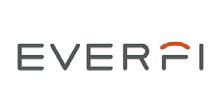 LEARN MORE
LEARN MORE
ADVERTISE WITH US
LEARN MORE
LEARN MORE
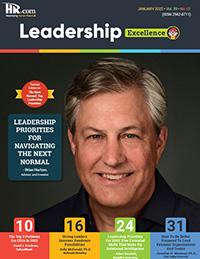
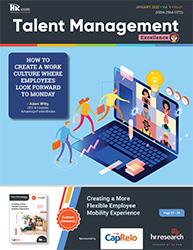

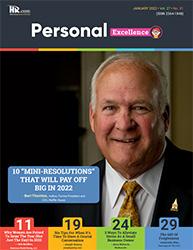
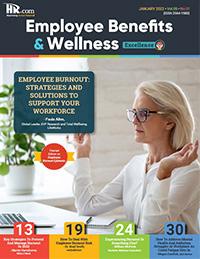

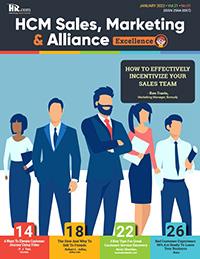
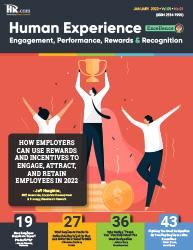

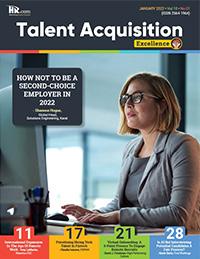
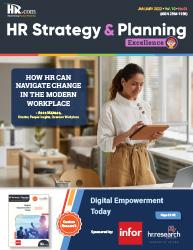
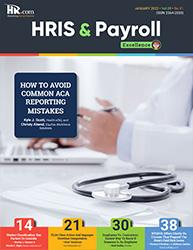
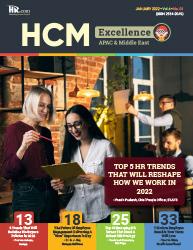
Publications
Targeted Publications
Reach Your Audience Informing, Educating, Enlightening and Assisting HR professionals in their personal and professional development, the Excellence series offers high-quality content through the publications! Like to submit an article? Use our online submission form or for more information go to www.hr.com/ExcellencePublications
13
to

























 Dr. Beverly Kaye CEO, BevKaye&Co.
Dr. Beverly Kaye CEO, BevKaye&Co.



















 By Stephen Rickles, Spencer Fane LLP
By Stephen Rickles, Spencer Fane LLP




 Nir Leibovich, CEO and Co Founder, GoCo
Nir Leibovich, CEO and Co Founder, GoCo



 Jimmy Minhas, Founder & CEO, GerdLi
Jimmy Minhas, Founder & CEO, GerdLi


 Sally Johnson, CEO & Founder, Greenlightbooking
Sally Johnson, CEO & Founder, Greenlightbooking

 By Cydnee DeToy, Next Street
By Cydnee DeToy, Next Street




 LEARN MORE
LEARN MORE












